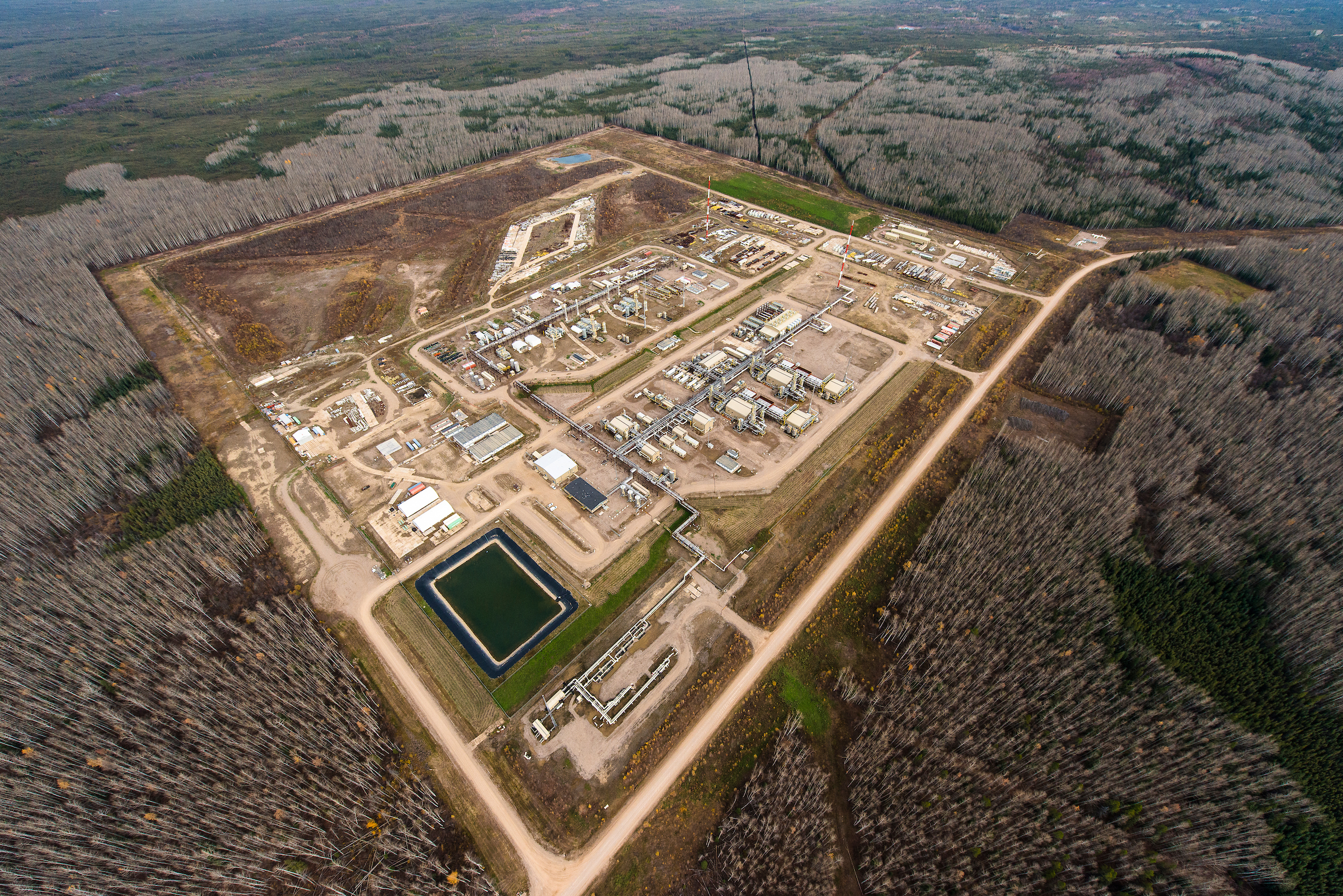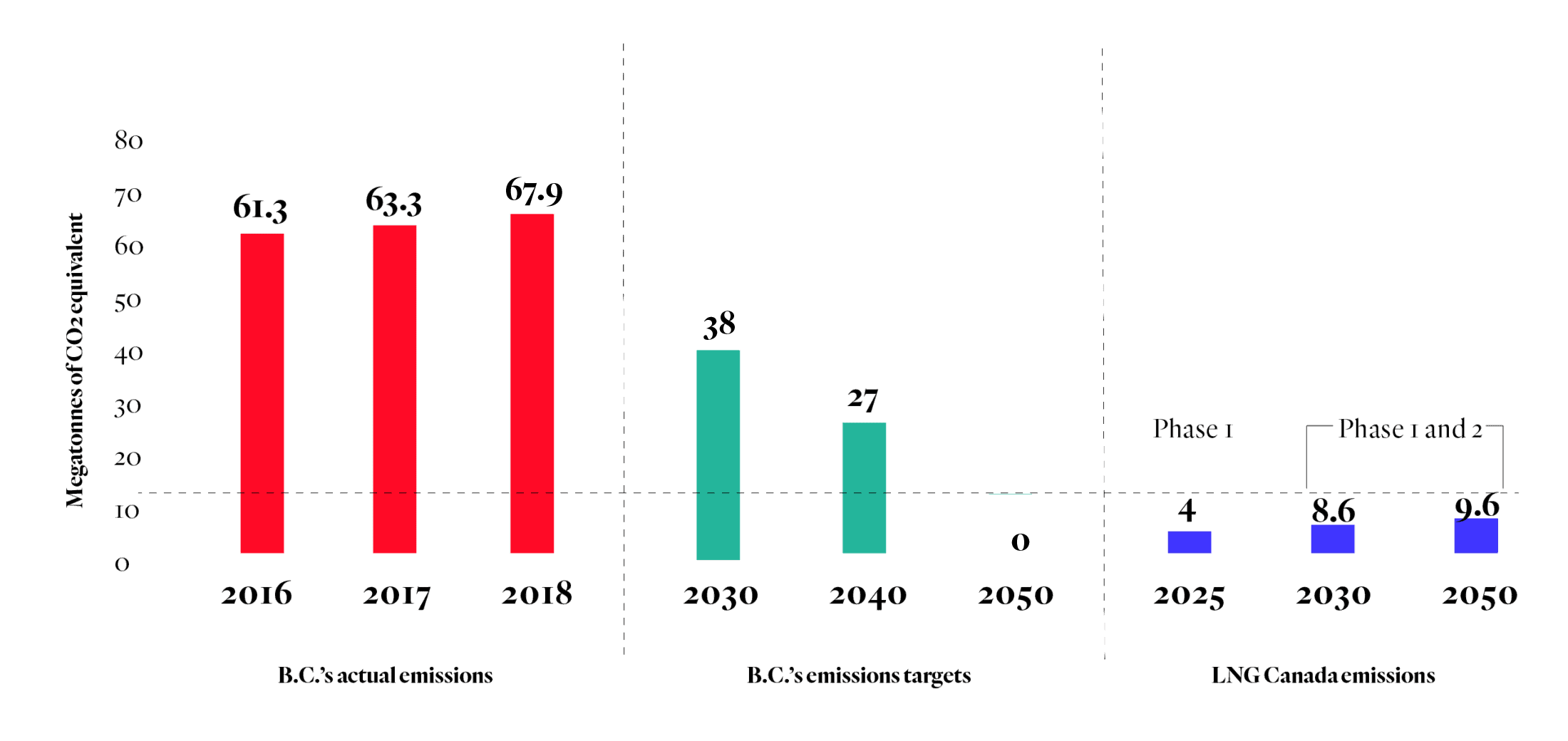
‘Afraid of the water’? Life in a city that dumps billions of litres of raw sewage into lakes and rivers
10 billion litres of sewage are dumped into Winnipeg’s lakes and rivers each year. Some...
The majority of British Columbians want the province to prioritize renewable energy development over LNG, according to a recent survey conducted on behalf of Clean Energy Canada, a think tank based at Simon Fraser University.
The survey found 61 per cent of British Columbians want the province to invest in renewables like hydroelectric power, hydrogen and clean technology. Less than a quarter of respondents said they’d prefer a focus on LNG.
“It’s clear that the public wants to invest in a clean economy,” Merran Smith, executive director at Clean Energy Canada, told The Narwhal. “They’re seeing the way the world is going. Many countries have committed to … net-zero emissions by 2050, and that means they’re looking for clean and renewable energy sources.”
Almost 80 per cent of respondents said the government should make sure all future LNG developments are subject to emissions requirements that fit within B.C.’s climate plan and its target of reducing emissions 40 per cent below 2007 levels by 2030.
The survey also found that about one in five British Columbians think the fight against climate change should be the province’s main focus, with 61 per cent agreeing it needs to be among the government’s priorities.
Marc Lee, senior economist at the Canadian Centre for Policy Alternatives, said the results of the survey are promising.
“I think the public is actually way ahead of the call [to move away] from fossil fuels,” he said. “We need to talk about systemic solutions and, by and large, the public is ready to go there.”
B.C. has been steadily increasing its investments in clean energy but continues to subsidize the nascent LNG industry to the tune of billions of dollars. There are seven LNG facilities at different stages of planning, proposal and construction in the province.
The province has long justified its investment in LNG by saying B.C. will produce the “cleanest LNG in the world” and LNG is a “transition fuel” that will help other countries move away from other fossil fuels. But as The Narwhal has previously reported, calling LNG a transition fuel is misleading because the total emissions associated with production, transport and liquefaction are similar to burning coal. And as demand for LNG decreases globally, the future of the industry is increasingly tenuous.
The Ministry of Environment and Climate Change Strategy was unable to tell The Narwhal prior to publication how the province’s investment in clean energy compares to its investment in LNG. However, the ministry noted the province allocated $902 million over three years in 2019 and an additional $419 million over three years in 2020 to the CleanBC initiative. This funding supports clean energy initiatives including electric vehicle charging stations, efficiency renovations and retrofits and incentives for industrial operations to reduce greenhouse gas emissions.
As The Narwhal previously reported, the province’s investments in just one LNG project through subsidies and tax credits could add up to more than $5 billion, according to a senior B.C. official.

Despite an uncertain future for LNG demand globally, B.C. continues to increase its investment in the industry, citing it as a transition fuel despite research showing that LNG emissions are comparable with those of burning coal. Photo: Garth Lenz / The Narwhal
In 2019, the province entered into an agreement with LNG Canada — the province’s largest LNG facility, which is under construction in Kitimat — that includes a 20-year deferral on provincial sales tax on construction, which adds up to an annual tax break of between $17 and $21 million. The province is also giving the facility a discounted rate on electricity, which will save LNG Canada between $32 and $59 million a year. And the facility will be exempted from any increases to the provincial carbon tax, an annual tax break of $62 million.
As The Narwhal recently reported, the province also offers natural gas companies royalty credits that decrease the revenue B.C. collects on LNG production. Over the past four years, B.C. received $1 billion less than it would have without the credits.
These provincial incentives are in addition to federal support, including a $220 million investment to help fund the installation of energy-efficient gas turbines that will facilitate the liquefaction process.
In a report written for the Corporate Mapping Project, Lee said the agreement between B.C. and LNG Canada lays out a framework for how the province can similarly support other proposed LNG projects, such as Woodfibre LNG, Kitimat LNG, Cedar LNG
and a proposed expansion to FortisBC’s Tilbury LNG facility.
Smith said all the investment in LNG might be for naught as more than 100 countries have made net-zero pledges for 2050, including some of the main markets for B.C. LNG like Korea and Japan. China, another key market, has made a net-zero commitment for 2060.
“It really brings into question whether they will actually want LNG,” she said. “I think that we are going to see a global demand for gas continually decline, because renewables are so much cheaper and cost-effective for some of the emerging economies like India.”
She added the survey shows that people in B.C. are ready for the transition to new, cleaner technologies, both at home and for potential export.
Almost 75 per cent of respondents said they would support policies that make LNG and other “pollution-intensive products and activities” more expensive if those policies also include ways to make greener alternatives cheaper and more accessible.
“There is a growing global demand for [clean energy exports],” Smith said. “British Columbians want to be part of that economy. That’s the economy of today and of the future. Those are jobs that will last.”
Those exports include minerals needed to produce electric vehicle batteries, hydroelectricity and manufactured products like heat pumps.
Last month, B.C. released its first Climate Accountability Report, which set a new emissions reduction target of 16 per cent below 2007 levels by 2025. It also reaffirmed its commitment to the 2030 target and said it would develop legislation to make sure B.C. reaches net-zero emissions by 2050.
But critics say the province’s investment in LNG will make meeting these targets impossible.
According to a Canadian Centre for Policy Alternatives report published last summer, the LNG Canada facility would be responsible for 13 megatonnes of emissions annually when operating at full capacity. That’s equivalent to putting more than 2.8 million cars on the road for a year. The facility has a projected lifespan of 40 years, which means it would still be open for business in 2050, when the province is expected to achieve net-zero emissions.

At B.C.’s current rate of investment in LNG, the province will not be able to meet its 2050 net-zero emissions target. Critics such as Andrew Radzik, energy campaigner for Georgia Strait Alliance, say that B.C.’s support of LNG is antithetical to its climate goals. Graph: Carol Linnitt / The Narwhal
As Lee pointed out in a recent critique of the province’s accountability report, “LNG Canada, anticipated to start in 2025, will become the province’s largest point source emitter of GHGs the day it opens.”
In a statement provided to The Narwhal, the Ministry of Environment and Climate Change Strategy said emissions produced by the LNG industry have to be compatible with the province’s climate action plans. This means that when LNG Canada starts operations, the province will have to find ways to reduce emissions in other sectors to offset the overnight increase. The ministry maintained it is working to reduce emissions throughout the natural gas industry.
“We’re working with industry and the federal government to reduce methane emissions from upstream extraction, production and liquefaction of natural gas and incentivizing cleaner production,” the statement said.
Read more: Fact check: are B.C.’s LNG ambitions compatible with its climate goals?
But despite these promises to “clean up” the industry, critics say continuing to support LNG is incompatible with B.C.’s promises for strong climate action.
“We cannot expand fracking and go ahead with the unbuilt LNG Canada project and still meet our climate goals,” Andrew Radzik, energy campaigner for Georgia Strait Alliance, wrote in a Stand.earth response to the province’s accountability report.
“This is a moment of truth for the premier: he can be a real leader, taking the decisions we need for a stable climate, or he can support fracking and LNG. We no longer have time to pretend we can do both.”
Get the inside scoop on The Narwhal’s environment and climate reporting by signing up for our free newsletter. On a warm September evening nearly 15...
Continue reading
10 billion litres of sewage are dumped into Winnipeg’s lakes and rivers each year. Some...

Court sides with Xatśūll First Nation, temporarily halting Mount Polley mine waste expansion

Break out the champagne: Emma’s storied life and leadership in journalism has earned her the...
